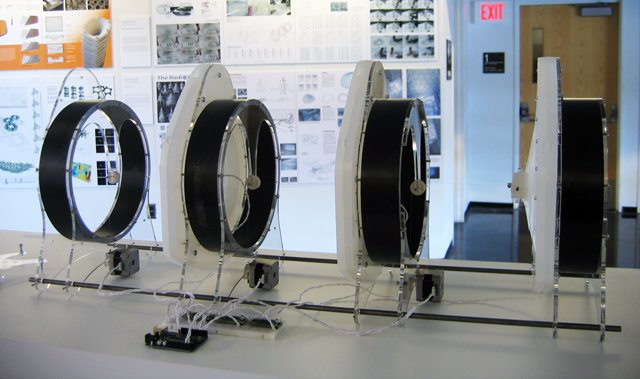Nick Bruscia

A thermo-sensitive reconfigurable mold (RCM-T) proposes a way to utilize the generative possibilities of algorithmic scripting within physical computing. The heat sensitive mold, in the process of fabrication, feeds the chemical heat gain from the poured material as it cures, directly into a generative
algorithm. This contextual data drives the behavior of the algorithm which in turn alters the morphology of the mold and hence the casted unit. One mold can produce several unique casts, each specific to the event of their making. The part-to-whole relationship of the resulting structures is allotropic: the same elements that form the network are individually shaped by the event of their making such that the same network can take on a variety of shapes. Such a system proposes a means to make moldable materials, like plastics, more responsive to the contingencies of their making. As a network structure parts can not be conceived in isolation but must be dynamically constructed with direct feedback from the entire assembly.
This work reconsiders computation in architecture through embedded circuitry and robotic technology which provides an opportunity to move away from screen based virtual reality and into augmented physical environments. Embedded computation has the ability to act directly on full scale prototypes
creating a dialogue between digital algorithms and analog constructions. Current rapid prototyping technologies provide a limited material palette that results in models unable to address full-scale material performance, capability, and options. While they offer a level of precision that is important
in realizing complex forms at any scale, they are often times built from the same digital model used to produce representational images. In contrast, algorithmic parametric modeling offers greater control on form generation facilitating the possibility to capture fascinating scientific and mathematical concepts coupled with input from actual material properties to produce architectural form and structure.





